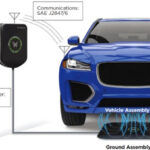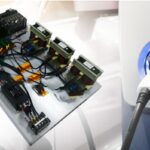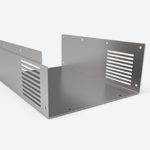by Protolabs
One of the first choices when designing an enclosure for electrical or electronic equipment is the material to use. For light-duty applications indoors, the choice is often plastic, but when the environment is harsher, electromagnetic shielding is needed, etc. metal is the clear choice.
But what metal? The traditional choices are aluminum, carbon steel, or stainless steel, but there’s another contender: copper. This article will discuss these choices and give some pointers on deciding on the best material for your application.
Sheet metal or CNC machining?
If given a choice, sheet metal is almost always less expensive than CNC machining. Like CNC machining, it can be done directly from the CAD model, and, once initial setup costs are amortized, it is faster and less expensive.
CNC machining is capable of much greater precision than sheet metal fabrication. It can produce one-piece parts that would require multiple components if made from sheet metal. So if dimensional tolerances are tight, machining may well be the way to go, but for most applications, sheet metal is faster and less expensive.
Now let’s look at the different metals, concentrating on sheet metal, with the exception of 3D printed copper.
Aluminum
Aluminum is moderate in price and light in weight. While its exact characteristics depend on the alloy used, in general, it is easy to bend to shape, and it’s easy to cut. While it handles most joining methods (rivets, screws, etc.) well, some can be problematic; its surface oxide layer makes soldering difficult, and that same oxide layer, coupled with aluminum’s high electrical conductivity, makes spot welding more difficult than with metals like steel.
Since it resists corrosion, aluminum can be left unfinished if aesthetics are not a consideration. Where appearance is important, it can be brushed or polished, powder-coated, painted, or anodized with good results. Chromate conversion coatings, while available, are subject to strict regulation: hexavalent chromium, for example, is almost entirely forbidden and has been mostly replaced by trivalent chromium.
Carbon steel
Cold-rolled carbon steel is stronger and stiffer than aluminum. It can be fabricated using conventional methods but must be protected from corrosion by galvanizing (either hot-dip or electroplated), powder coating, or painting. In many outdoor applications, a plain galvanized finish is acceptable.
Stainless steel
Stainless steel is strong and corrosion-resistant but can be more expensive than the others. It is important to keep in mind that different grades of stainless vary in formability and corrosion resistance, as this will affect fabrication methods, especially bending and forming. Final finishes can be brushing, polishing, painting, and powder coating.
Copper
While copper is seldom used for enclosures, it finds much use for internal components like bus bars, due to its excellent electrical conductivity, and heat exchanges and sinks, because of its excellent heat conductivity. Protolabs has recently added the capability to do 3D printing in copper, using direct metal laser sintering (DMLS).
DMLS, like other 3D printing methods, is an excellent choice for building very complex parts. And for heat exchangers and other structures that have internal cooling channels, it’s the only practical choice, says Joe Cretella, applications engineering supervisor at Protolabs. Aside from the cost, says Cretella, the reason 3D-printed copper is not used very much for enclosures is that the technique is limited to a 4-inch size at high resolution. But because of its precision, it’s finding increasing use in aerospace and medical applications.
Summary
Many factors go into the choice of materials for an enclosure, and it’s a good idea to consult with the chosen prototyping/fabrication company to avoid poor performance, unnecessary delays, and excessive costs. For more detailed information on materials, you can consult Protolabs’ Material Comparison Guide.






